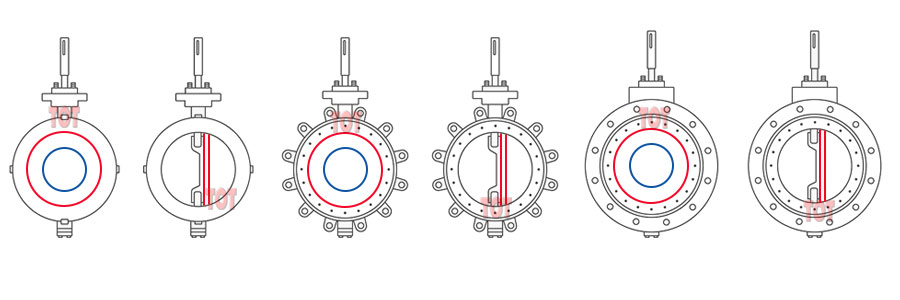
Table of Contents
ToggleWhat is a Butterfly Valve?
The butterfly valve is a quarter-turn control valve, a control device used to regulate fluids such as liquids and gases in pipelines. The valve gets its name from the shape of its rotating disc, which resembles a butterfly’s wings. Butterfly valves are often favored for their compact design, cost-efficiency, and versatility in a wide range of industrial applications.
This guide will explore everything you need to know about butterfly valves, from their basic principles of operation, types, materials, and applications to how to select the right valve for your needs. Whether you are looking to purchase valves or simply want to expand your technical knowledge, this guide will explain everything below and we hope it will be helpful to you.
What are the Main Components of a Butterfly Valve?
A butterfly valve may seem like a simple device from the outside, but its internal structure is engineered for precision, durability, and efficiency. Understanding the key components of a butterfly valve helps you better evaluate its performance, reliability, and suitability for specific applications. Here are the essential that make up a butterfly valve parts:
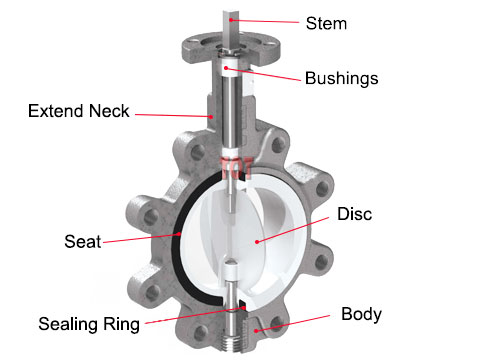
Valve Body
The valve body forms the outer casing of the butterfly valve. It provides the structural framework and houses the internal components. Depending on your piping design, the body may come in wafer, lug, double-flanged, or butt-weld configurations.
- Common Materials: Cast iron, ductile iron, stainless steel, carbon steel, PVC.
Disc (Butterfly)
The disc is the key element that rotates to control the flow of fluid. Positioned in the center of the pipeline, the disc turns on its axis to allow, restrict, or block the passage of media. Its design directly affects the valve’s sealing performance and flow efficiency.
- Common Designs: Concentric, double offset, triple offset.
- Common Materials: Stainless steel, ceramic, plastic, or coated with rubber or PTFE.
Stem (Shaft)
The stem connects the actuator (manual or automatic) to the disc, enabling rotation. It must be strong and corrosion-resistant to withstand torque and environmental stress. High-performance valves often use blow-out proof stem designs for safety.
- Common Materials: Stainless steel, carbon steel, alloy steel.
Seat or Sealing Ring
The seat ensures a tight seal when the valve is closed, preventing leakage. It lines the inner surface of the body where the disc makes contact. Seat materials vary depending on pressure, temperature, and chemical compatibility.
- Soft Seat Materials: EPDM, NBR, PTFE, FKM.
- Metal Seat Options: Stainless steel, Inconel, or ceramic for extreme conditions.
Actuator / Operating Mechanism
This is the driving mechanism that opens and closes the disc. Actuation can be manual (with a hand lever or gear operator) or automated using electric, pneumatic, or hydraulic actuators. The right actuator depends on your process requirements.
- Types: Lever handle, gear operator, electric actuator, pneumatic actuator, hydraulic actuator.
Bushings or Bearings
Bushings support the stem and reduce friction during rotation. They also improve the valve’s service life by minimizing wear and ensuring smooth operation. In high-performance designs, bushings are often self-lubricating.
- Materials: Bronze, PTFE, stainless steel, or composite materials.
This modular butterfly valve structure can be customized to meet your industrial application needs, from basic water supply to high-performance chemical processing. Knowing what each component does—and how it’s made—empowers you to choose the right valve for long-term reliability and efficiency.
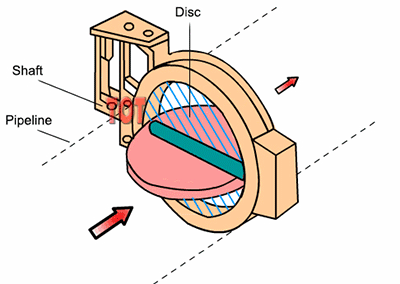
How Does a Butterfly Valve Work?
The butterfly valve is a relatively simple structure that controls fluid flow by rotating the valve disc.
When closed, the valve disc blocks the valve hole, and when open, the valve disc is perpendicular to the flow direction, allowing fluid flow.
Butterfly valves usually provide bidirectional flow and shut-off functions. However, they are not full-bore, so they are not suitable for pigging or suction.
The valve bodies we produce are made of high-quality stainless steel or cast steel, with a glossy surface or coated with a uniform epoxy powder coating.
Depending on the specific application requirements and technical specifications, the valve is usually operated by a handwheel, gear, actuator, or a combination of them. We will discuss the actuation method later in this article.
Types of Butterfly Valves | Which One Is Right for You?
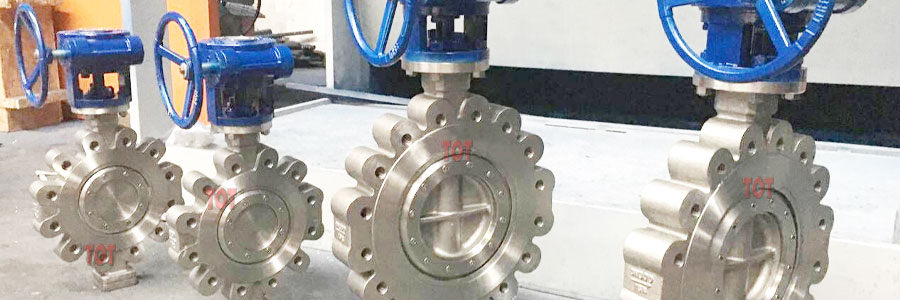
At TOT Valve, we have different types of butterfly valves for you to choose from to suit different application scenarios. Here’s a breakdown of the common types based on design, material, and actuation method.
By Design:
- Concentric Butterfly Valve: Commonly used in low-pressure applications, offering a cost-effective solution.
- Double Eccentric Butterfly Valve: Suited for medium to high-pressure applications, it provides better sealing and longer lifespan.
- Triple Eccentric Butterfly Valve: Ideal for high-pressure, high-temperature applications, especially in industries that deal with corrosive fluids.
By Connection Design:
- Wafer Butterfly Valve: Installed between flanges with bolts, this design is compact and ideal for tight spaces.
- Lug Butterfly Valve: The dual-sided lugs provide a bolted connection, making it easy to install or remove the valve without disrupting the entire piping system.
- Flanged Butterfly Valve: Equipped with flanges for bolting directly to the pipe, providing a secure connection.
- Butt-Weld Butterfly Valves:Welded directly between pipes, making them suitable for high-pressure applications.
By Actuation Method:
- Manual Butterfly Valve: Use a handwheel, crank, or lever to operate the valve. Operated by hand for basic applications where automated control is not required.
- Electric Butterfly Valve: Powered by electricity, offering precise control for complex systems.
- Pneumatic Butterfly Valve: Actuated by compressed air, commonly used in industries that require fast response times.
- Hydraulic Butterfly Valve: Driven by hydraulic power, often used in high-pressure applications.
What Materials Are Commonly Used in Butterfly Valves?
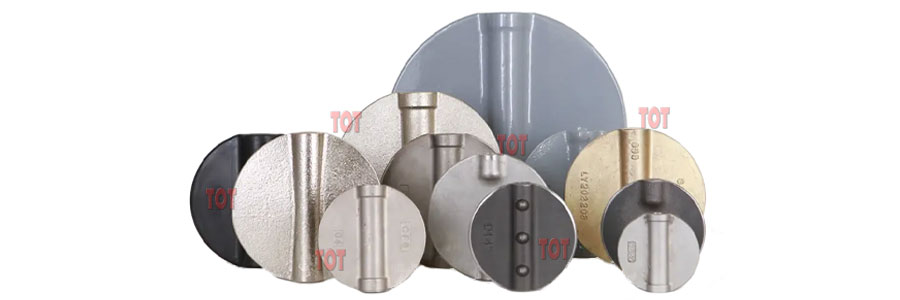
The materials used in the construction of butterfly valves are crucial for their performance, especially in harsh conditions. The selection of materials directly impacts the valve’s durability, corrosion resistance, and ability to handle different types of fluids. Below are some of the most common materials used in butterfly valves:
Metal Butterfly Valves
- Cast Iron: A cost-effective material that is commonly used for low to medium pressure applications. Cast iron is known for its strength and durability, although it may not perform well in highly corrosive environments.
- Stainless Steel (304 & 316): Stainless steel butterfly valve durability and high corrosion resistance make it ideal for use in demanding applications such as chemical production, sanitary food systems, and pharmaceutical manufacturing. 316 stainless steel offers enhanced corrosion resistance, particularly in marine or highly corrosive environments.
- Cast Steel: Offers high strength and is often used for high-pressure and high-temperature applications. It is, however, more prone to corrosion than stainless steel.
- Alloy Steel: This material is used in high-performance butterfly valves for industries dealing with extremely high temperatures or aggressive fluids. Alloy steels such as 17-4 PH provide both strength and resistance to wear.
Plastic Butterfly Valves
- PVC (Polyvinyl Chloride): Lightweight, corrosion-resistant, and affordable, PVC butterfly valves are commonly used in low-pressure applications, especially for water and wastewater treatment.
- CPVC (Chlorinated Polyvinyl Chloride): This material is similar to PVC but with added chlorine for enhanced chemical resistance. CPVC butterfly valves are often used in chemical processing applications where higher temperatures and harsher chemicals are involved.
- PP (Polypropylene): Due to its strong resistance to a wide range of chemicals, polypropylene is frequently selected for use in the chemical, food, and water treatment industries.
- PVDF (Polyvinylidene Fluoride): Combining excellent thermal stability with chemical inertness, PVDF is a preferred material in industries where purity and performance are essential, such as pharmaceuticals and specialty chemicals.
Butterfly Valve Seats
- Rubber (EPDM, NBR, FKM): The valve seat material plays a significant role in sealing and preventing leaks. Common rubber materials include EPDM (Ethylene Propylene Diene Monomer), NBR (Nitrile Butadiene Rubber), and FKM (Fluorocarbon rubber). Each material has different temperature, pressure, and chemical resistance properties, making it important to select the right seat material for the application.
- PTFE (Polytetrafluoroethylene): PTFE is a high-performance material with excellent chemical resistance and is often used in butterfly valves that handle aggressive fluids such as acids and solvents.
- Metal Seats: For high-temperature and high-pressure applications, metal seats made from materials such as stainless steel (CF8 & CF8M), nickel alloys, or tungsten carbide are used. These are ideal for applications that require durable, long-lasting performance in extreme conditions.
- Ceramic: Ceramic butterfly valves are specifically designed for abrasive, corrosive, and high-temperature applications. The ceramic disc provides excellent wear resistance, making it ideal for industries such as mining, slurry transport, and chemical processing. Ceramic valves are known for their ability to handle abrasive media, like cement or coal slurries, with minimal wear.
Key Advantages of Butterfly Valves | Why Choose Them?
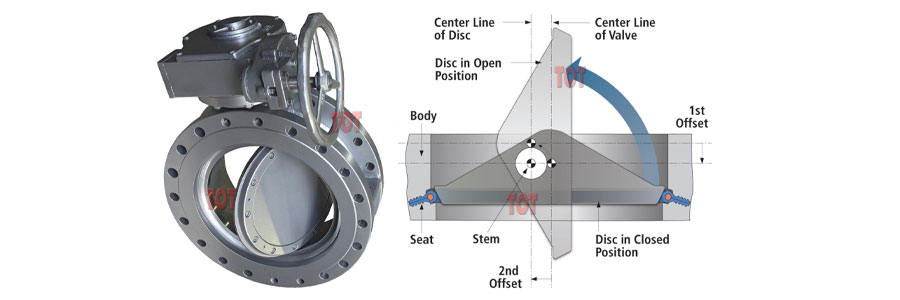
Butterfly valves have gained popularity in various industries due to their numerous advantages. Here’s why you should consider using them:
Butterfly valves have a low pressure drop, which is beneficial for pipeline pumping systems.
Butterfly valves act quickly and have a simple operating mechanism. There are many types of automatic drive systems that can be used to operate butterfly valves.
Compared with other types of valves, butterfly valves are more compact, simpler in structure, and lighter in weight. Therefore, they usually take up less space and material. This is because they are designed to be installed between two pipe flanges. They are an economical alternative to globe valves and gate valves and have lower maintenance costs.
Butterfly valves have a wider operating temperature and pressure range than ball valves. Soft valve seats can be replaced with metal valve seats to improve their high temperature resistance and flame retardancy for use in fire protection applications.
You can use butterfly valves to handle large flows of fluids at relatively low pressures, as well as liquids containing suspended solids.
Disadvantages of Butterfly Valves | When Should You Avoid Them?
While butterfly valves offer numerous benefits, they do come with some drawbacks that should be considered before choosing them for your system:
The throttling of butterfly valves is limited to low pressure differentials.
The sealing performance of butterfly valves is poor and can only achieve effective sealing under low pressure.
Butterfly valves require high torque during operation.
Cavitation and blocking are potential problems of butterfly valves.
Applications of Butterfly Valves | Where Are They Used?
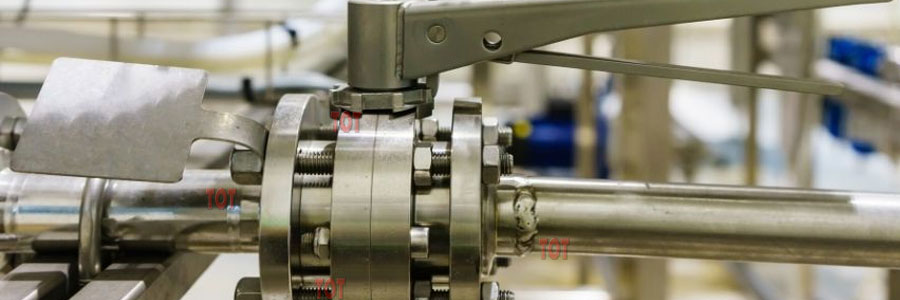
Butterfly valves are essential in numerous industries because of their versatility and consistent performance. Let’s take a look at some of their main applications:
- Water Treatment: Widely used in water treatment systems, butterfly valves help control and direct water flow in both public utilities and industrial operations.
- Oil and Gas: They help control the flow of crude oil, natural gas, and refined products in pipelines.
- Chemical Processing: Resistant to corrosive chemicals, butterfly valves are used in chemical processing plants.
- HVAC Systems: Within HVAC systems, butterfly valves ensure precise regulation of air distribution and system performance.
- Food and Beverage: These valves meet sanitary standards and are used for controlling the flow in food processing systems.
- Sanitary Butterfly Valves: Valves used in medical and hygienic environments are typically constructed from 316L stainless steel. Internal surfaces are highly polished (often Ra < 0.8 μm), which prevents residue build-up and facilitates thorough cleaning.
How to Choose the Right Butterfly Valve?
The best butterfly valve for your system depends on a range of considerations, including the application’s demands. Here’s a quick guide to help you make an informed decision:
- Fluid Type: Choose a material that can withstand the chemical properties of the fluid.
- Pressure and Temperature: Ensure the valve is rated to handle the pressure and temperature conditions of your system.
- Size and Design: Match the valve size to your pipeline’s specifications and select the appropriate connection type (e.g., wafer, lug, flanged).
- Actuation: Decide whether you need manual, electric, pneumatic, or hydraulic actuation based on your system’s complexity.
Common Problems with Butterfly Valves and How to Fix Them
Even the best butterfly valves can experience issues over time. Here are some common problems and solutions:
- Seal Failure: Over time, the valve seals may degrade. Regular maintenance and seal replacement can prevent leaks.
- Sticking or Hard Operation: This can be caused by dirt or corrosion. Cleaning and lubricating the valve will restore smooth operation.
- Leakage: Inspect the valve regularly for signs of wear and tear. Replacing worn-out components can prevent leakage.
Butterfly Valve Maintenance Tips | Keep Your Valves Running Smoothly
Proper maintenance ensures that your butterfly valves perform optimally over their lifespan:
- Regular Inspections: Check the valve body, disc, and actuator for signs of wear.
- Lubrication: Keep the moving parts well-lubricated to help things run smoothly and avoid rust or wear.
- Seal Replacement: Replace worn seals to maintain a tight seal and prevent leaks.
Conclusion & Call to Action
Butterfly valves are an essential component for many industrial systems, offering an efficient, cost-effective solution for flow control. By understanding their working principles, advantages, and limitations, you can choose the right valve for your specific needs.
If you need assistance selecting the ideal butterfly valve for your system or require more technical guidance, feel free to contact our team or download our free selection guide.
FAQ
Why is it called a Butterfly Valve?
The valve gets its name from the shape of its rotating disc, which resembles a butterfly’s wings.
Why Do Butterfly Valves Fail?
Failure often occurs due to worn-out seals, corrosion, or physical damage to the valve components.
Are Butterfly Valves Better Than Gate Valves?
Butterfly valves are generally more compact, cost-effective, and easier to install compared to gate valves, but they may not be ideal for high-pressure applications.
Which Gear is Used in the Butterfly Valve?
Butterfly valves often use gears to help rotate the disc, particularly for large valves requiring more force.
Can Butterfly Valves Control Flow?
Yes, butterfly valves can control flow, although their precision may not be as high as ball valves.
How Much Pressure Can a Butterfly Valve Hold?
The pressure tolerance depends on the type of valve and material, but generally, they are used for low to medium pressure applications.
Do Butterfly Valves Need Lubrication?
Yes, regular lubrication is necessary for smooth operation and to prevent corrosion.
How Long Do Butterfly Valves Last?
With proper maintenance, butterfly valves can last for many years, typically 10-15 years or more.
Ball Valve vs Butterfly Valve | Which is Better for Your System?
When choosing between a ball valve and a butterfly valve, consider the following:
- Ball Valve: Offers highly accurate flow control and excels in high-pressure settings.
- Butterfly Valve: A more economical and space-saving option for low-pressure applications.
